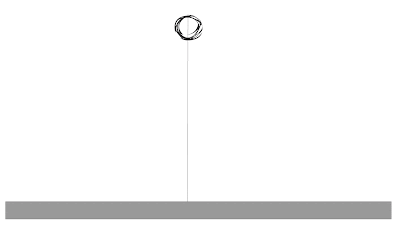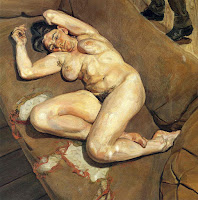Bouncing Ball - Flash:
Bouncing Ball & Supporting Ball connected by String - Flash:
Bouncing ball exercise in Flash - in order to understand foundations of character animation:
Key steps to building exercise - Action, Motion Path, Timing, Stretching, Weight, etc. - reminder to explore deeper into Preston Blair's Cartoon Animation book:
Being mathematically balanced - drawing initial studies in Flash at first, centre and end frame, then building up in between [need to cut jargon and produce the most important components first, rather than exploring beyond key ideas in face of project and time management].
Building ground and drawing straight line to be aware of solid barriers and straight angle/directions
Reminder: Slow-More-Narrower, Fast-Less-Wider [realising need to improve smooth varying speeds when creating Morph exercise - Robin-Strawberry-Ant].
Surprisingly dynamic result of first bouncing ball, especially when observing accidental cross shape revolving around ball, as if drawing dismembered head being bounced up and down - really like seeing sketchy and therefore energetic outcome.
Then drawing supporting bouncing ball connecting to first ball by string, exploring and understanding weight, as now red ball's stronger yet still rubber-like weight pulls string and second ball down with force - building blocks of character and creature design.
Shown clips from Ratatouille [Pixar, 2007] and Tarzan [Disney, 1999], exploring character posture and movement - e.g. Remy the rat seems to have almost no neck, and his body may simply be sack full of sand, ducking his head forward as if he had been used to crawling under cramped places almost all of this life, whilst Tarzan seems to incorporate animal movements and gymnastics [take notice of practically everything - Old Masters statues, Olympic sports [involving whole of human body], London Zoo, musical theatre acting, etc.]
Discovering Living Lines Library, collections of pencil tests, production art and other studio work from animated features such as Ratatouille and Tarzan [even concept art from some feature films more interesting to look at than final products themselves] - www.livlily.blogspot.co.uk:
Ratatouille [Pixar, 2007] - Remy character designs [almost no neck, both head and body seems to flow together in curving-sack posture]:
Ratatouille [Pixar, 2007] - climbing and running postures [e.g. cooking pot scene], nose always lurching forward, dragging rest of body [studying animal anatomy]:
Practicing lurching-forward postures in notebook [e.g. Remy]:
Tarzan [Walt Disney, 1999] - postures and movements probably influenced by zoo animals an Olympic sports, etc. [e.g. "rollerskating through Coke cans"]:
Tarzan [Walt Disney, 1999] - cramped, elastic and dynamic postures, as if you can see influences from Old Masters statues [Michelangelo, etc.]:
Tarzan-inspired gymnastic-athletic running postures, with use of simplistic shapes [e.g. Barcelona 1992 logo] - depicting thick, white, heavenly clothes, perhaps [MGM musical costume design, etc.]:









































